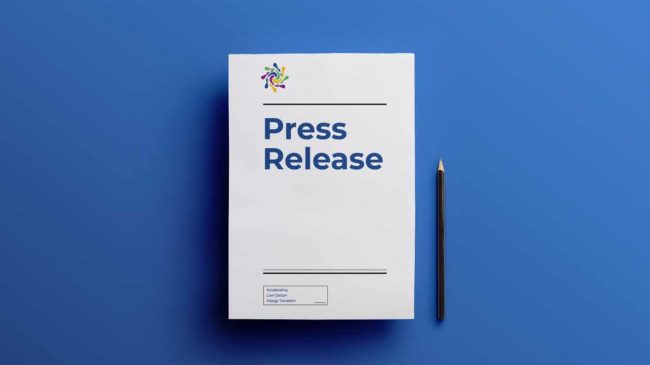Jakarta, April 25, 2024 – The Indonesian government, through the Ministry of Environment and Forestry (MoEF), is currently drafting the Second Nationally Determined Contribution (SNDC) document. In contrast to the Enhanced NDC document published in 2022, the emission reduction target in the SNDC document is no longer measured based on emission reductions from the base growth scenario (business as usual). The SNDC will compare greenhouse gas (GHG) emission reductions against the 2019 reference year based on GHG inventories. The government believes that this method of determining emissions is more accurate and will contribute to the global GHG emissions reduction target of 43% by 2030, compared to the 2019 emissions.
The Institute for Essential Services Reform (IESR) believes that updating scenarios that are no longer based on business as usual and instead use scenarios that reference historical emission reductions as a basis for setting targets is a positive development. This approach aligns with the recommendations made by IESR in the previous year.
“The emission reduction target in Indonesia’s SNDC must be aligned with the Paris Agreement target. The findings of the first Global Stocktake at COP 28 revealed that there is still a gap in the global emission reduction target of 20.3-23.9 gigatons of carbon dioxide equivalent. Therefore, it is crucial to consider this to set a more ambitious emission reduction target in 2030,” said Fabby Tumiwa, Executive Director of IESR.
Fabby added that expanding the renewable energy mix is one of the mitigation actions that can increase the emission reduction target in the SNDC. To align with the 1.5 degree Celsius pathway, the renewable energy mix in primary energy needs to reach 55 per cent by 2030. Unfortunately, the Draft Government Regulation (RPP) of the National Energy Policy (KEN), which was drafted by the National Energy Council (DEN), only aims for a renewable energy mix target of 19-21 per cent by 2030. Not only that but in terms of emission reduction targets for the energy sector, the KEN RPP suggests a target level of emissions in the energy sector that is still large, namely 1,074-1,233 million tons of carbon dioxide equivalent in 2030.
Deon Arinaldo, Program Manager of Energy Transformation, IESR, mentioned that if the energy sector emission reduction target in the SNDC refers to the KEN RPP, then it is certain that the target is still not in line with the Paris Agreement. In fact, according to him, the energy sector, particularly the electricity sector, can play a pivotal role in enhancing Indonesia’s emission mitigation ambition with the wide availability of renewable energy options and competitive economics.
“There are less than seven years left until the year 2030, which means that action to mitigate emissions in the energy sector needs to focus on strategies that can be rapidly implemented and accelerated. Renewable energy needs to be massively built in the electricity sector to optimize emission reduction through electrification of the transportation sector through electric vehicles and electric boilers and heat pumps in the industrial sector. All of the above options are commercially available and cost-competitive. The government should not be complacent with other options such as nuclear and CCS that can only be operational after 2030 so that strategies that can reduce emissions are stalled in their implementation,” Deon explained.
Delima Ramadhani, Coordinator of Climate Policy, IESR, said that the latest emission projection by Climate Action Tracker (CAT) reveals that the Enhanced NDC is expected to increase emissions to 1.7-1.8 Giga tons of carbon dioxide equivalent by 2030, which is 70-80% higher than the emissions recorded in 2019. It is important to note that this projection does not include emissions from the forestry and land sectors. To align with the 1.5 degrees Celsius target, Indonesia must reduce emissions between 829-859 million tons of carbon dioxide equivalent by 2030. Alternatively, for a target below 2 degrees Celsius, Indonesia should aim to reduce emissions between 970-1060 million tons of carbon dioxide equivalent, excluding forestry and land sector emissions.
“The government needs to include aspects of fairness and explain why the emission reduction targets listed in the SNDC are considered a fair share of Indonesia’s contribution to global climate mitigation efforts. Thus, it can be seen if the SNDC already reflects the “highest possible ambition” in emission reduction,” Delima added.
On the other hand, IESR highlights that the SNDC document must prioritize justice and good governance. These aspects of fairness and transparency need to be reflected in the SNDC drafting process, which includes promising practices, relevance to national circumstances, involvement of domestic institutions, and public participation.

